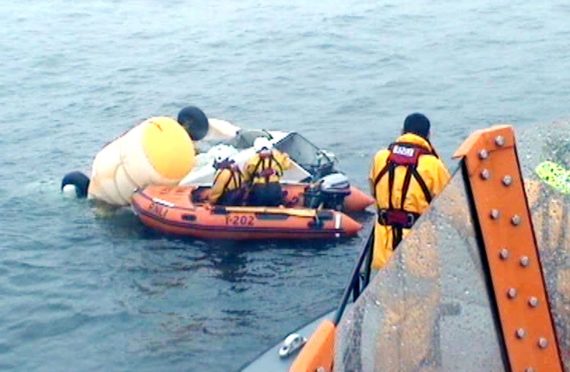The pilots of a helicopter which crashed in the sea off Shetland in fog were “not aware” of what each other were thinking on the landing approach, a fatal accident inquiry heard today.
A Super Puma chopper plummeted in to the sea just under two miles west of Sumburgh Airport on August 23, 2013, in which four offshore workers died on the day, while a fifth victim committed suicide four years later.
The helicopter operators, CHC Scotia Ltd, have since updated their “Standard Operating Procedures” (SOP) relating to landing approaches, according to Alison Campbell, a senior inspector of air accidents.
She has criticised the pilot and co-pilot on their “brief” prior to the flight and on the approach to Sumburgh, particularly relating to the sudden reduction of airspeed and height.
Asked about the final moments of preparing to land by advocate Jonathan Lake, representing the helicopter operator CHC, Miss Campbell said: “What was in each of their minds was not the same.
“There was an expectation on the co-pilot to call out height and speed deviations, but there was no definition about that from the pilot.”
- October 20, 2020
- October 20, 2020
- October 19, 2020
- September 14, 2020
- September 11, 2020
- September 10, 2020
She told the inquiry: “There was a lack of brief on the approach, a lack of brief on what speed the pilot expected to fly into Sumburgh.
“The pilot flying would be responsible for the brief. They were not sharing the same mental model in the last few minutes of the approach.
“The commander had in his mind his approach, but the co-pilot did not have a full picture of what the commander had decided to do, in relation to speed, pitch.
“His co-pilot was playing catch up. It is difficult to monitor your crew member as you are always behind them.”
A report in 2016 by the Air Accidents Investigation Branch – for which Miss Campbell is an investigator – was referred to in the inquiry which said flight instruments were “not monitored effectively” by the pilots in the moments leading up to the crash.
The AAIB said a lack of monitoring meant a reduction in air speed was not noticed by the pilots and attempts to recover control were too late.
Miss Campbell said the helicopter operators, CHC, had since “updated” their “Standard Operating Procedures” manual for pilots relating to height and speed during landing approaches.
Miss Campbell, who holds a commercial pilot licence for planes and also a private helicopter pilot licence, said: “Both [pilot and co-pilot] have a responsibility of the instruments – for height, speed.
She said the role of monitoring the instruments was “for both crew”, adding: “There is no delegation to check instruments, particularly in fog.
“They perhaps should have done a more extensive briefing about an approach to Sumburgh. They should have had a mental model of Shetland.”
She told the inquiry that the pair had flown together before, but never into Shetland.
The inquiry has already been told that there was no evidence of any technical fault such as a gearbox failure.
A reduction in airspeed during descent was not noticed by the pilots, the AAIB investigation had found, ultimately leading to the crash.
At some point the chief pilot saw the sea, but he was unable to arrest the helicopter’s descent.
The passengers who died on the day were: Sarah Darnley, 45, of Elgin; Gary McCrossan, 59, of Inverness; Duncan Munro, 46, of Bishop Auckland; and 57-year-old George Allison, of Winchester.
A fifth victim, Samuel Bell, from the London area, committed suicide four years later.
The inquiry, which is expected to last four weeks, continues.
